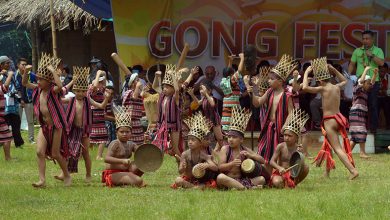Cities and Towns
Magellan and his successors began by establishing themselves in the Visayas, in the centre of the archipelago, and from there moved gradually northward. When the Spanish captain Miguel de Legazpi arrived in 1571 at the site of Manila and decided to found a permanent settlement there. The site was occupied only by a small fishing village called May Nilad. May Nilad was a walled Muslim settlement ruled by Rajah Sulayman.
Concerned to maintain communications with Spain, Legazpi first built a harbour defended by a fortified post. Then, having been appointed by Philip II as first Governor-General of the Philippines, he selected Manila to be the capital of the Spanish Pacific possessions. In 1853 they formed an imposing fortified town known as Intramuros. The beauty of the old Spanish town with its narrow streets, churches and palaces enclosed within its walls earned Manila the title of Pearl of the East.
Down the centuries this system of fortifications suffered frequent attack by a variety of enemies first by the Chinese, who were concerned by this Western presence off their coasts (in 1574 Salcedo beat off a raid by a Chinese pirate named Limahong); then by the various European nations with whom Spain was at war during the 17th and 18th centuries, including the Dutch (1600, 1614, 1617), whose naval defeat in 1646 is still commemorated, and the British, who actually occupied Manila for two years (1762-1764) during the Seven Years War.
During the national rising against the Spaniards which became the War of Independence of 1898 it was the Filipinos themselves who laid siege to the Spanish forces entrenched within the walls of Manila. For the first time the international situation favoured the rebels; for a similar rising in Cuba had turned American’s attention to the importance of the Spanish colonies and provided a pretext for the Spanish-American war. When Commodore Dewey’s squadron entered Manila Bay without encountering any opposition from the battery of rebels on Corregidor and destroyed a Spanish flotilla at Cavite, the Spanish forces trapped in Manila found themselves in a desperate position, and Aguinaldo’s rising came within an ace of success. But victory was snatched from his by the coup de théâtre of the Treaty of Paris (December 1898), under which Spain evacuated Cuba and ceded the Philippines to the United States. The Americans now took over from the Spaniards and dislodged the besieging forces, their erstwhile allies, from their trenches; and after violent fighting a new colonial period began for Manila. In 1901 the first American Governor-General, William H. Taft (later to be President), took up residence in his official headquarters, the Malacañang Palace.
In 1934 the Philippines were granted domestic self-government and promised independence in ten years; but before that period expired, the country, particularly the capital suffered the worst disaster in their history. The Japanese bombing of Pearl Harbor, the American naval base in Hawaii, on 7 December 1941 marked the beginning of a bitterly fought war which soon spread to the whole Pacific area. The Japanese at once launched an attack on the Philippines and on Manila, the principal American naval and military base in the Far East. Not daring to force an entrance to the bay, they landed on Mindanao and Luzon, attacked Manila from the rear and occupied it on 2 January 1942. The American and Filipino forces trapped on the island of Corregidor and the peninsula of Bataan in Manila Bay were compelled to surrender on 6 May 1942. A government of collaborators was set up, and Manila learned to live under Japanese occupation.
Gen. MacArthur, ordered to withdraw just in time to escape the final disaster, vowed that he would return and was fulfilled after three years; after a naval victory in October 1944, American forces landed on Leyte, in the Visayas, and re-entered Manila on 4 February 1945, and in the following year the Malacañang Palace, which had seen succession of different occupants, became the residence of the first President of the Independent Republic of the Philippines.
After the American bombing of 1945, however, the city had been reduced to rubble, the most seriously devastated capital in the world after Warsaw and Berlin, alleged the Filipinos and the Pearl of the East seemed to have been destroyed for good. After its post-war rebuilding, however, Manila now presents a very different aspect.
In 1976, President Ferdinand Marcos issued a Presidential Decree 824, creating the Metropolitan Manila. The decree seceded the 12 municipalities and 3 cities of Rizal, the Municipality of Valenzuela in Bulacan, Quezon City and Manila. His wife, First Lady Imelda Marcos was appointed as a governor and the Metropolitan Manila Commission was created to administer the emerging metropolis.
Among the developments promoted by Sonora Imelda Marcos, as a governor of Greater Manila, were the Cultural Center, with houses for opera and ballet and halls for concerts and exhibitions which offer standards of performance perhaps unequalled in Asia; the Design Center; the Folk Arts Theater; and the International Congress Center, with luxury hotels for the accommodation of congress members. Architecturally and artistically all these buildings are undoubted successes. Along with them must be mentioned the Heart Center, a hospital which ranks as a great centre of medical technology.
In 1986, after the major reorganization of the government, President Corazon Aquinas issued Executive Order No. 392 and changed the structure of Metropolitan Manila Commission and renamed it as Metropolitan Manila Authority in which Manila mayors chose the chair of this agency.
In 1995, Metro Manila Authority was reorganized and became the Metropolitan Manila Development Authority, through a Republic Act 7924 wherein the President appoints its chair.




